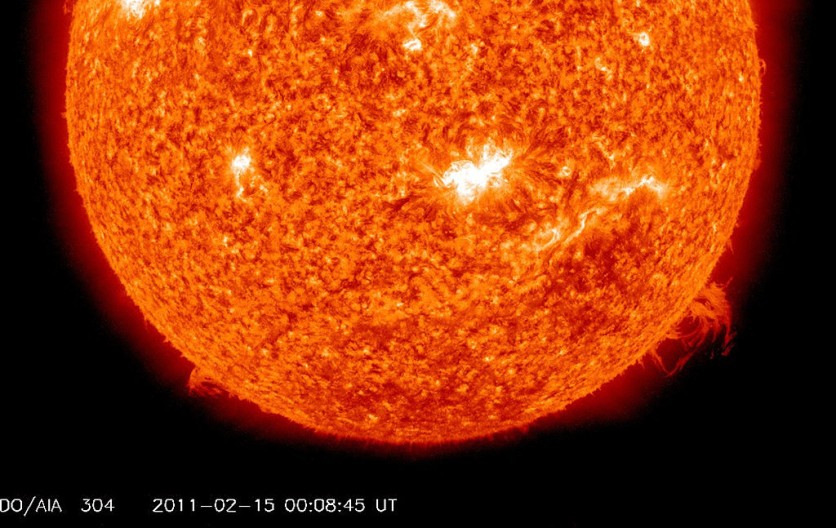Following its historic achievement of successfully landing a spacecraft near the moon's south pole, India's space agency, the Indian Space Research Organisation (ISRO), has announced its next ambitious endeavor - launching a satellite to survey the sun.
According to AFP, the forthcoming mission, named Aditya-L1, will mark India's inaugural space-based observatory focused on studying the sun. The ISRO announced on its social media account that the launch is slated for September 2.

'Aditya' Satellite of India
The satellite, called "Aditya," which translates to "sun" in Hindi, will be positioned in a halo orbit at a distance of around 1.5 million kilometers (930,000 miles) from Earth.
This orbit will provide the craft with an uninterrupted view of the sun, enabling it to closely observe solar activities and their impact on space weather in real-time.
To fulfill its objectives, the spacecraft will carry seven distinct payloads designed to analyze various aspects of the sun's outermost layers, including the photosphere and chromosphere.
These payloads encompass electromagnetic and particle field detectors that will contribute to a deeper understanding of solar dynamics. Notably, the mission's key focus is to explore the drivers behind space weather phenomena, shedding light on solar wind dynamics and related effects.
While space organizations like NASA and the European Space Agency (ESA) have previously dispatched orbiters to study the Sun, India's Aditya-L1 mission will represent the country's first dedicated solar observation mission. This ambitious undertaking follows closely on the heels of India's recent milestone in space exploration.
The uncrewed Chandrayaan-3 mission, colloquially known as "Mooncraft," achieved a successful landing on the lunar surface last week, propelling India into the ranks of nations, including the United States, Russia, and China, that have achieved soft landings on the moon.
NASA, ESA Praise India For Chandrayaan-3's Success
The successful Chandrayaan-3 mission has garnered recognition and accolades from prominent international space agencies. Bill Nelson, the Administrator of NASA, congratulated ISRO and India via Twitter for becoming the fourth country to soft-land a spacecraft on the moon.
"Congratulations ISRO on your successful Chandrayaan-3 lunar South Pole landing! And congratulations to India on being the 4th country to successfully soft-land a spacecraft on the moon. We're glad to be your partner on this mission!" Nelson wrote.
The UK Space Agency and the European Space Agency's Director General, Josef Aschbacher, also praised India for its remarkable feat and innovative technological approach. The Chandrayaan-3 mission's triumph underscores not only India's scientific prowess but also its commitment to learning from past experiences.
Drawing lessons from the Chandrayaan-2 mission's Vikram lander crash in 2019, ISRO adopted a "failure-based design" approach, implementing system backups and safeguards to ensure a safe and successful landing.
Key enhancements were made to the guidance, navigation, and control system, allowing Vikram to correct its trajectory deviations more effectively. This approach minimized the risk of straying off course during descent.
The Chandrayaan-3 mission's successful landing near the moon's south pole underscores the importance of international collaboration in space exploration and highlights the growing capabilities of nations in the field.
Related Article : A Sunspot With the Size of Four Earths Ejects 10 Million Degree Solar Flare, Causes Radio Blackout over the Pacific

ⓒ 2025 TECHTIMES.com All rights reserved. Do not reproduce without permission.




